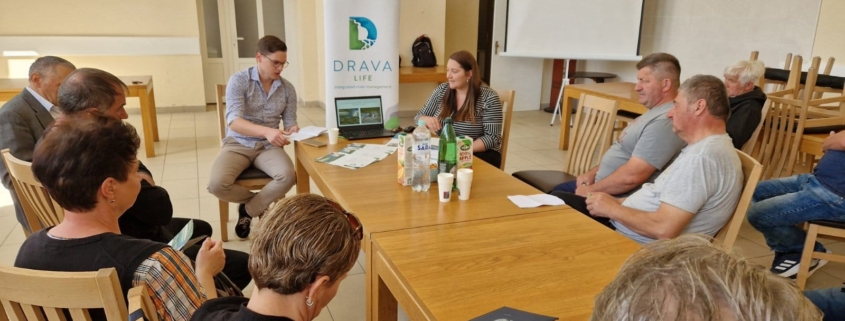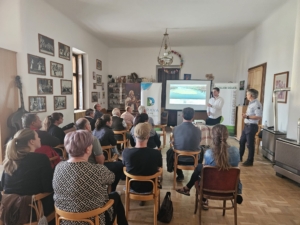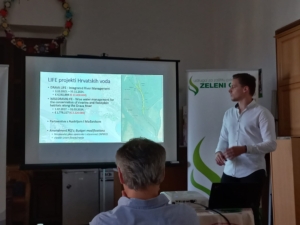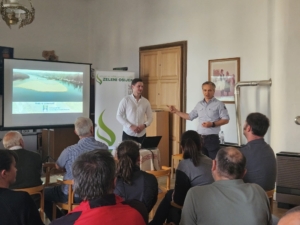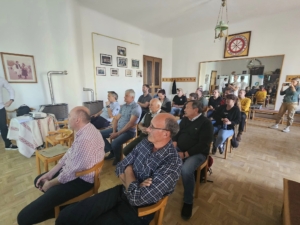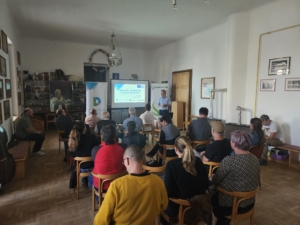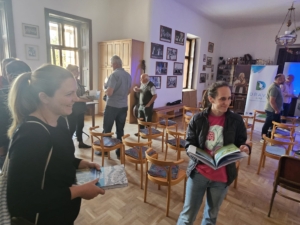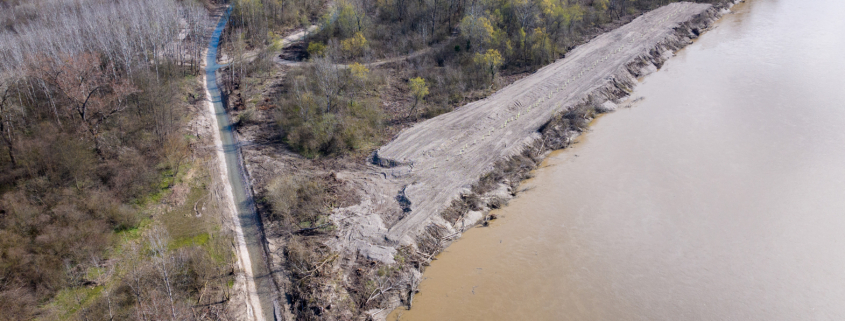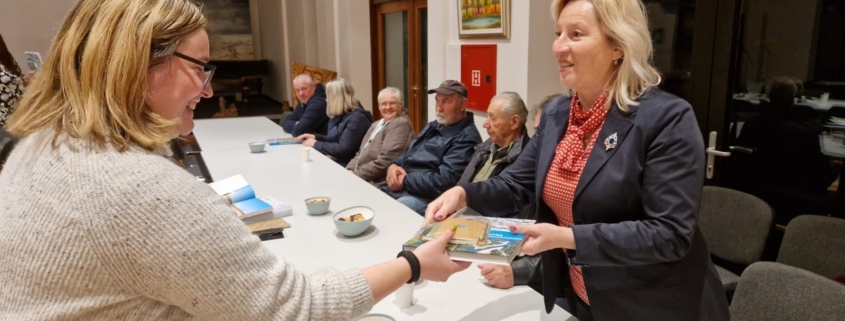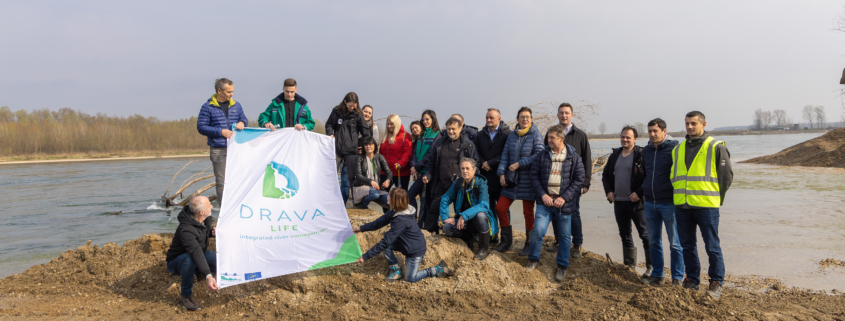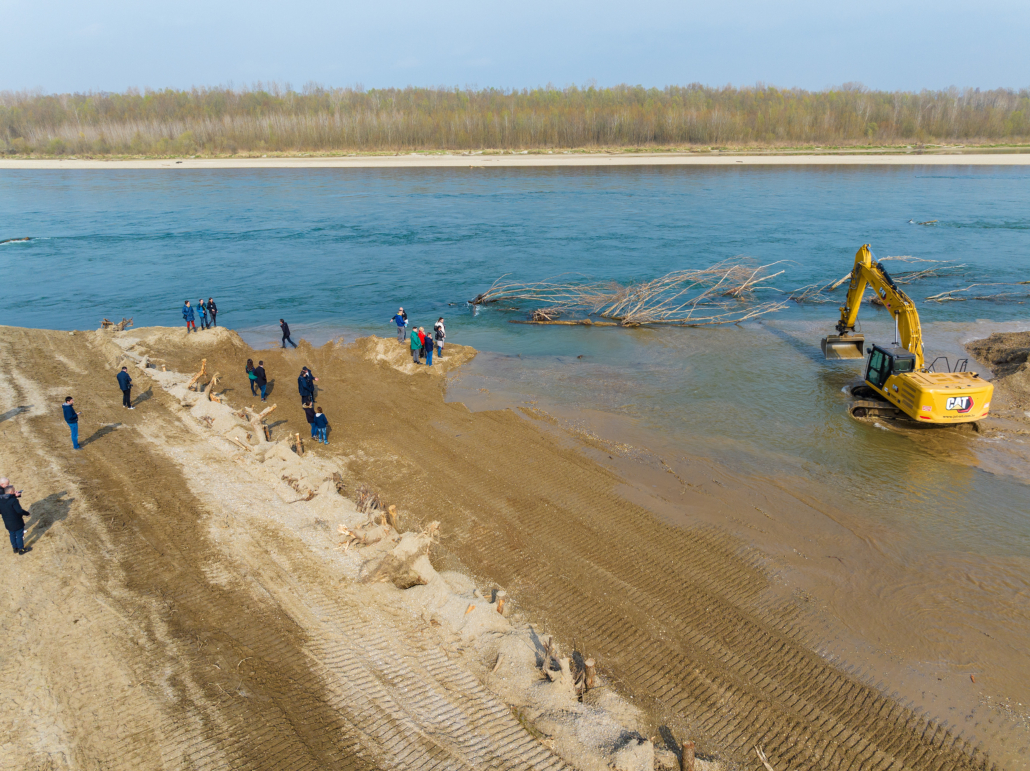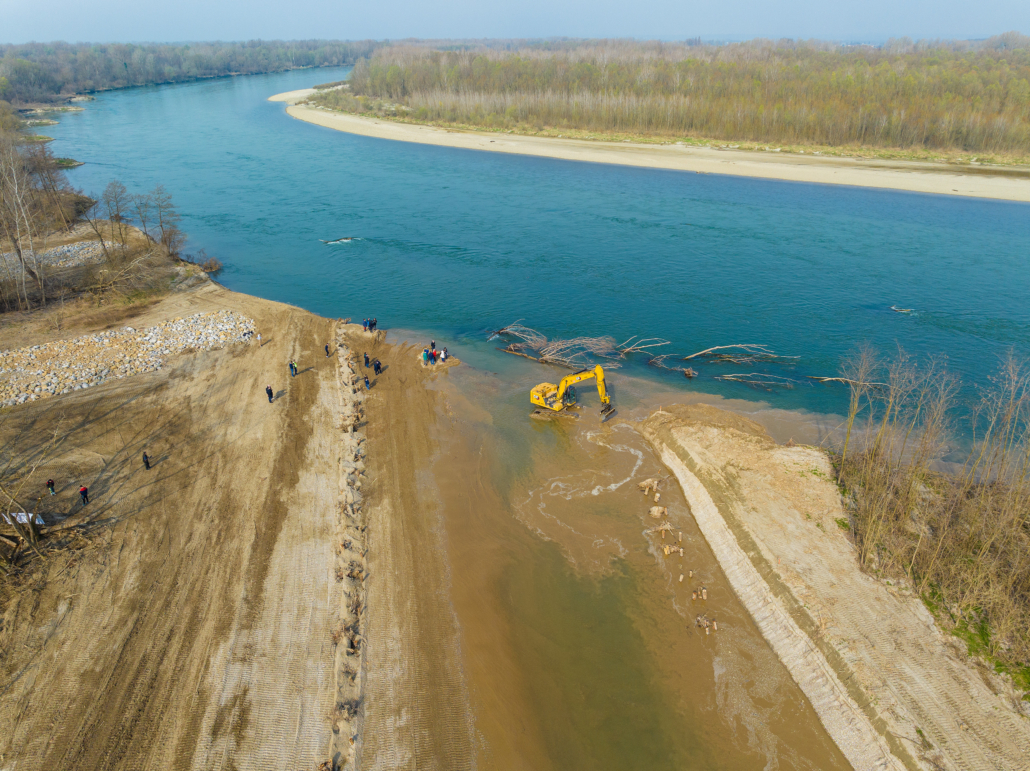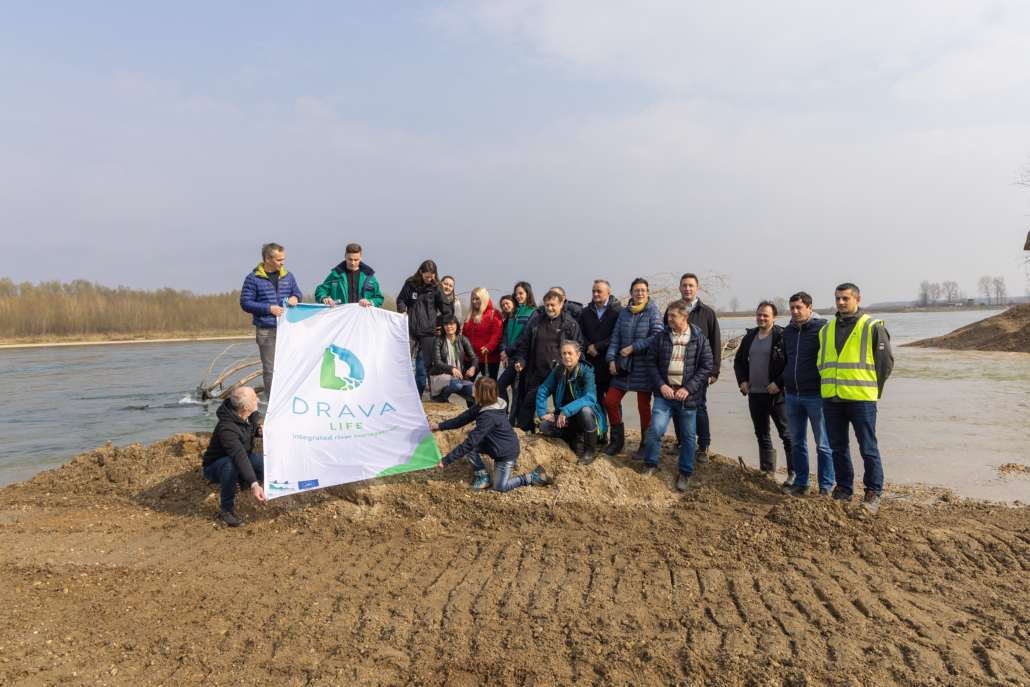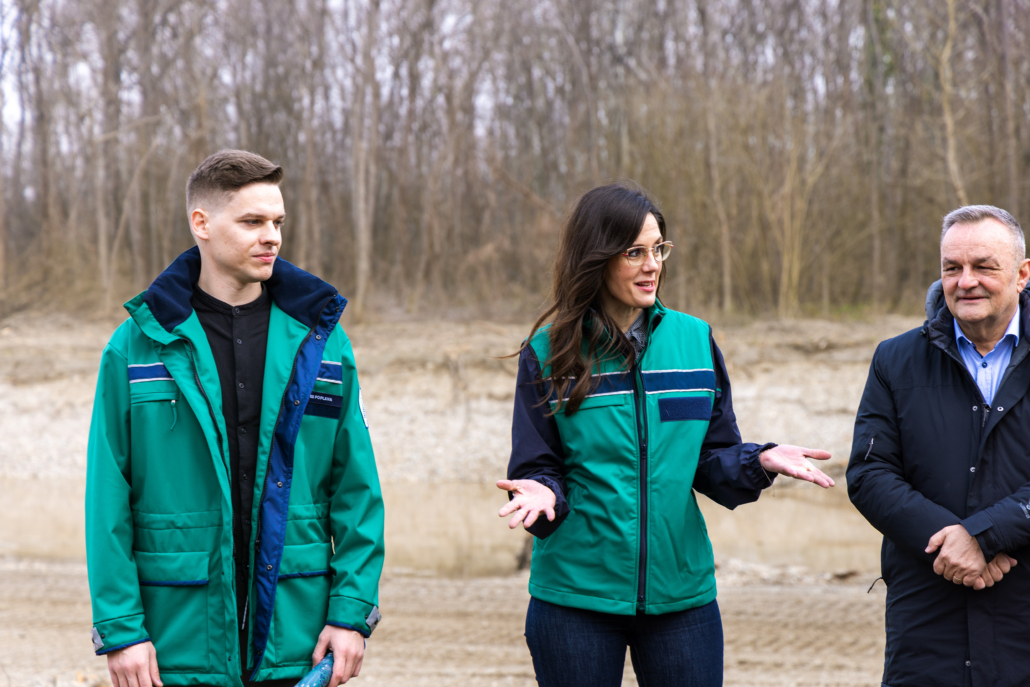Restored branches near Donja Dubrava, Legrad, and Gola were opened
/in Drava, Nekategorizirano, Project /by Iva Naglić DolićDonja Dubrava, March 14, 2024 – Activities for the restoration of Drava River branches within the project “DRAVA LIFE – Integrated River Management” have been completed in the areas of the municipalities Donja Dubrava, Legrad (rkm 238.2-241.4), and Gola (rkm 215-217). With the increase in water levels, the restored branches have become flowing again.
Through the opening and creation of new branches, the removal and adaptation of riverbanks and other water structures, as well as the preservation of floodplains and natural steep riverbanks, key natural features of the Drava River ecosystem, one of the last remaining natural European rivers, are restored. Sediments and barriers were removed from existing branch channel routes, ecological ponds and deep pools were constructed, and gabion barriers and transition ramps were reconstructed at several locations.
“After the restoration works, which began at the end of September 2023, the left bank branch near Donja Dubrava will be 1.56 km long, and the right bank branch will be 1.88 km long,” explained Igor Tošić, the project manager from the Croatian Waters. Both branches, which were overgrown and silted before the restoration works, will relieve pressure on existing water structures downstream, especially during flood events, by opening and diverting new inflow from the main river channel, thus protecting embankments and nearby settlements. This will reduce the need for repairs and construction of regulatory structures along those sections of the Drava, and specifically, with the restoration of the left bank branch in Donja Dubrava, it will increase embankment safety for flood protection.
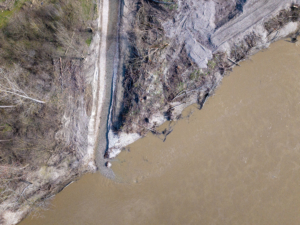
Foto: Goran Šafarek
Additionally, in the left bank inundation from stations rkm 215+000 to 217+000 in the municipality of Gola, near the village of Novačka, works have been completed to open the first 100 meters of an existing non-flowing branch, approximately 1.3 km long.
Drava is known for its highest biological diversity of fish in Croatia and colonies of river birds.
“The habitats on the Drava include some of the most endangered in Europe, such as floodplain forests, wet meadows, gravel bars and sandy shores, branches, steep banks, dead arms, standing branches, abandoned channels, and meanders. Due to various adverse effects, with climate change leading the way, there are changes in hydrological conditions, often causing degradation and disappearance of these habitats, making them increasingly endangered, with their area reduced,” explained Željka Kolar, director of the Public Institution for the Management of Protected Nature Areas in the Koprivnica-Križevci County.
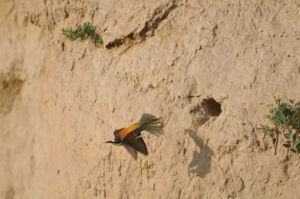
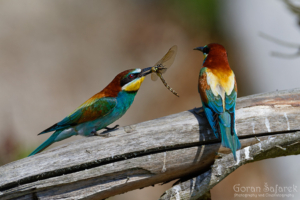
Sand martins and king fishers
In addition to the positive effects on flood defense and Drava’s hydromorphology, branch restoration activities will significantly contribute to increasing biodiversity. New river habitats will intensify along the banks, and new habitats for spawning, feeding, and resting of fish and amphibians will be created within the branches themselves. Drava is known for its highest biological diversity of fish in Croatia. Out of 70 recorded species, five are endemic to the Danube basin: Danube salmon (Hucho hucho), bleak (Rutilus pigus), monkey goby (Gymnocephalus baloni), racer goby (Gymnocephalus schraetser), and streber (Zingel streber)). Out of 70 recorded species, 38 are included in the Red Book of Freshwater Fish of Croatia. Positive effects will also extend to birds nesting on gravel and sandy bars and steep banks, such as the sand martin (Riparia riparia) and the kingfisher (Alcedo atthis).
After the recently opened new branch near Gabajeva Grede and the completion of works in the municipalities of Donja Dubrava, Legrad, and Gola, preparatory work for the branch near the Botovo bridge will continue until the end of March, followed by a break until September to prevent disturbance to river birds, such as sand martins (Riparia riparia), European bee-eaters (Merops apiaster), and kingfishers (Alcedo atthis) during the breeding season.
Intensive educational activities will be carried out during these months. Besides the restoration of the Drava River ecosystem, education on nature protection and Natura 2000 areas in local communities is an important part of the DRAVA LIFE project to increase awareness of the importance of natural and preserved rivers for humans and living beings dependent on them and to prevent human disturbance of birds during the breeding season through recreational activities such as fishing, paddling, and swimming.
In September, restoration works on the Drava will continue at the remaining planned locations in Varaždin and Virovitica-Podravina counties.
Community Gathering in Hlebine
/in Drava, Nekategorizirano /by Iva Naglić Dolić
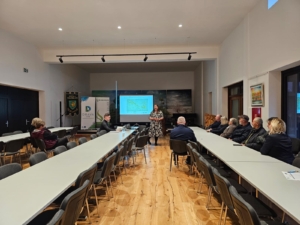
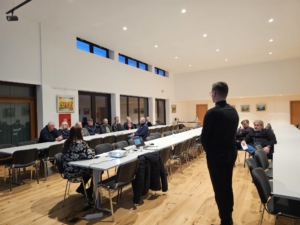
At the Social Center in Hlebine on Thursday, March 7th, a presentation of the project “DRAVA LIFE – Integrated River Management” was held. The local population was presented with the achieved results so far, as well as the announced plans and activities for the upcoming period.
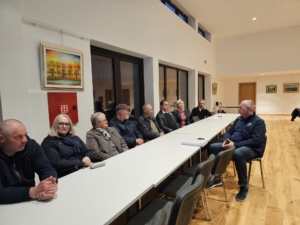
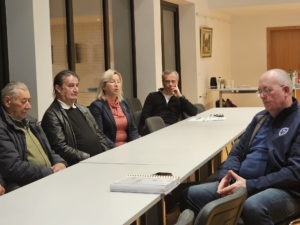
The Mayor of the municipality, Božica Trnski, received the book “Drava Yesterday, Today, Tomorrow” by author Goran Šafarek. The book, made within the framework of the DRAVA LIFE project, summarizes the most relevant data about the river and illustrates them with beautiful pictures. It provides information on the physical characteristics of the river, its social and cultural importance, species and habitats, threats, and the future of this river landscape, taking into account the restoration projects currently underway on the Drava River. We thank everyone who attended!
This year ahead of us is full of activities, both in the field and in the municipalities and places covered by the DRAVA LIFE project. If you wish to receive our news, we invite you to subscribe to the newsletter on the homepage of our website.
An initial channel of the Drava River has been opened
/in Nekategorizirano /by Iva Naglić DolićIn the area of the municipality of Hlebine, near the settlement of Gabajeva Greda, an initial channel of the Drava River has been opened, and other works in Koprivnica-Križevci County, carried out as part of the project “DRAVA LIFE – Integrated River Management,” have been presented to the public.
“We are pleased to show you the newly formed river arm on the right bank of the Drava after intensive work that began earlier this year,” said Ana Šelimber, Deputy Director of the Water Management Department for the Mura and Upper Drava from Hrvatske vode, explaining how the restoration and opening of new river arms like this one will contribute to local water level reduction during major floods and positively impact groundwater reserves.
Ratimir Ljubić, Deputy County Prefect of Koprivnica-Križevci County, recalled the critical flood situation in August last year. He emphasized that besides relieving the watercourse, this river arm will bring additional value to the Drava River while ensuring the preservation of biodiversity of flora and fauna, thus adding extra value. The mayor of the Municipality of Gola, Stjepan Milinković added that the Drava River is the lifeline of this area.
Project leader Igor Tošić (Hrvatske vode) explained, “We are currently at the initial right arm in Gabajeva Greda, which will, after the works, have a total length of 1,196 meters and a channel width of up to 27 meters. After several passes of water waves, this initial arm will assume a more natural, balanced position. Currently, the works on the left bank near the settlement of Novačka are in the final phase, where excavation of approximately 100 meters will open the entrance of the existing arm, which is currently non-flowing, and has a length of around 1,200 meters. In addition to these locations, works are currently underway in the municipalities of Donja Dubrava, Legrad, and Ferdinandovac in Koprivnica-Križevci County for the restoration of Drava river arms. Upon completion of the works, all river arms will be flowing for most of the hydrological year.”
In addition to restoring the Drava River ecosystem, the project promotes nature conservation in local communities and increases awareness of the importance of its preservation.
“In collaboration with public nature protection institutions from Koprivnica-Križevci, Varaždin, and Virovitica-Podravina counties, by organizing various events, exhibitions, setting up educational infrastructure such as educational centers and trails with informational boards along the Drava River, we aim to connect the local population with the project and enhance awareness of the importance of natural and preserved rivers for humans and the living beings that depend on them, and to improve their knowledge of the Natura 2000 network, especially regarding protected river birds,” emphasized Jasmin Sadiković, project coordinator from the Association for Nature and Environment Protection Green Osijek.
The area of the DRAVA LIFE project is part of the first World Five-Country UNESCO Biosphere Reserve Mura-Drava-Danube, known as the “European Amazon”, which is located in Austria, Slovenia, Croatia, Hungary, and Serbia.
“I am happy that today we can witness the creation of a completely new arm of the Drava River and that intensive work is being done at other locations,” said Arno Mohl from WWF Austria. “Efforts to restore Novačka are the best example of integrated river management in cooperation between the water management and nature protection sectors. Instead of reinforcing embankments, more space for river flow is provided, which will help not only in flood protection but also increase river dynamics and enable the development of new sandy and gravel islands, which are the most important river habitats for endangered birds like the little tern or almost extinct plant German Tamarisk.
“River restoration projects as DRAVA LIFE are an important steps in implementing the Nature Restoration Law adopted by the European Parliament earlier this week, which requires member states like Croatia to restore all degraded ecosystems. Its implementation will reverse the damage inflicted on ecosystems in Europe. Untouched rivers, forests, and other ecosystems are our most important allies in combating the climate and biodiversity crises. Restoration within the Drava LIFE project is the first of its kind in Croatia, in collaboration between the water management and nature protection sectors, which has proven successful, so we expect even more ambitious initiatives in the future,” concluded Mohl.

